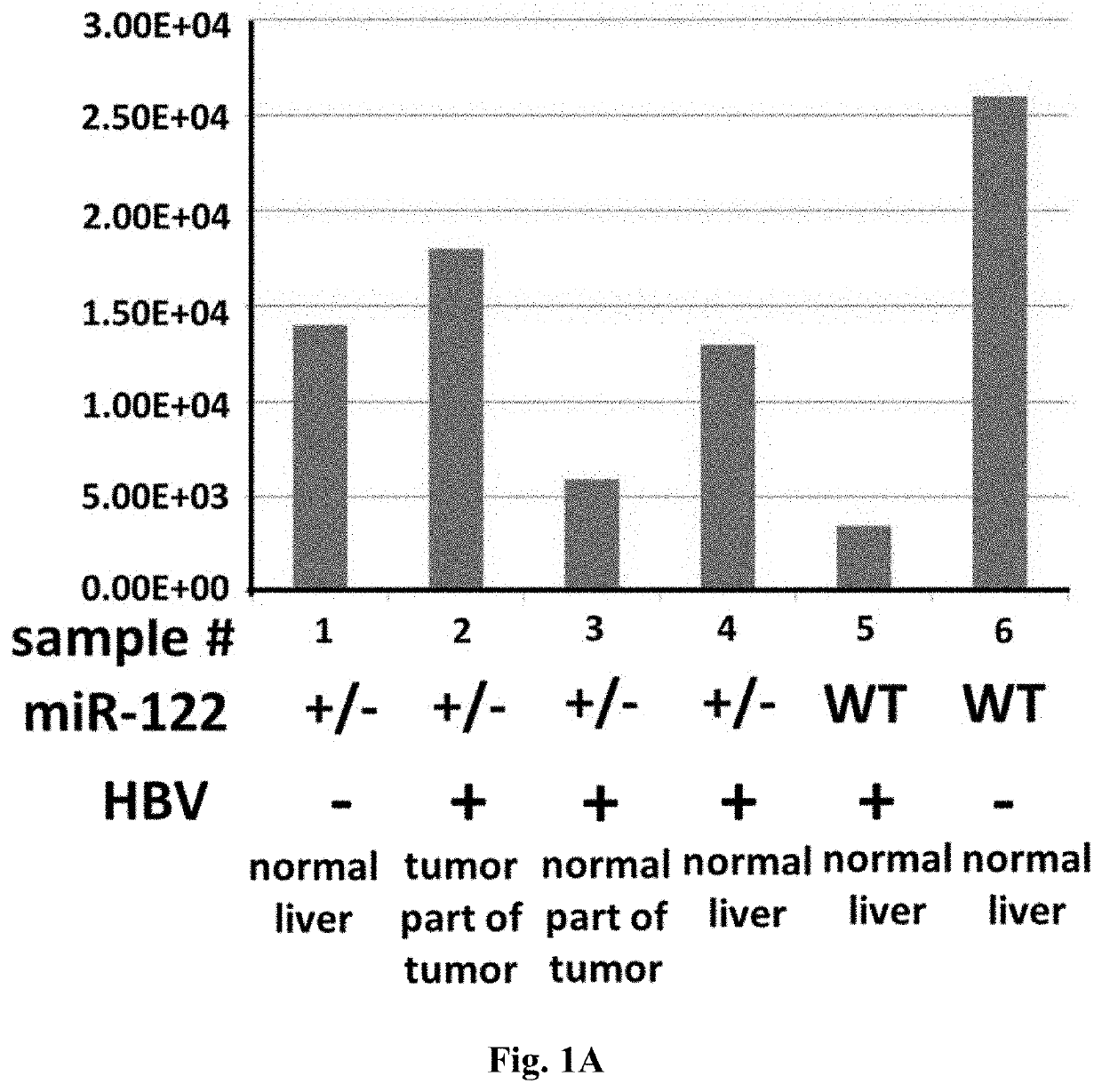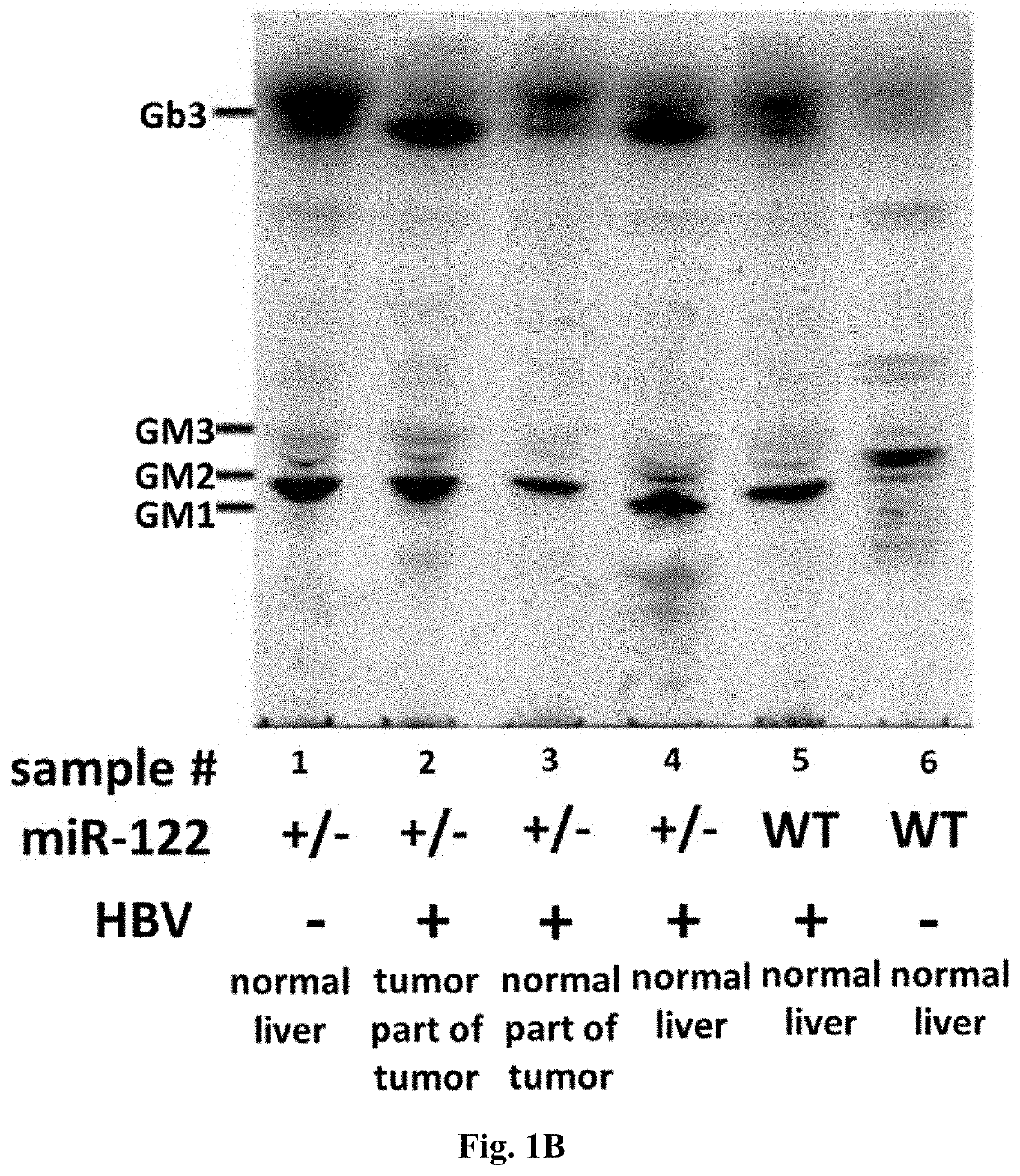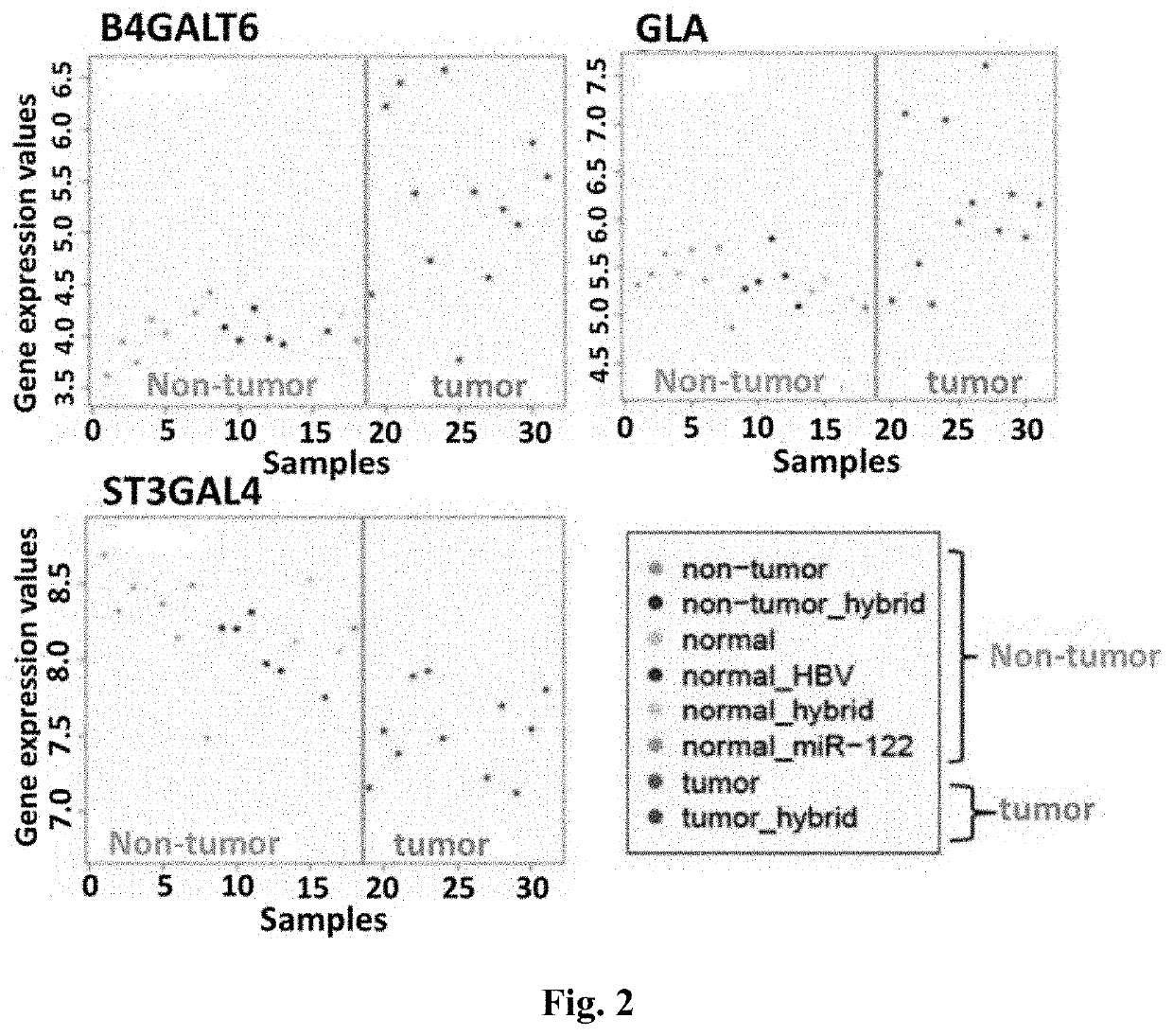Method and application thereof for predicting prognosis of cancer
- Summary
- Abstract
- Description
- Claims
- Application Information
AI Technical Summary
Benefits of technology
Problems solved by technology
Method used
Image
Examples
example 1
Glycosphingolipids (GSLs) Expression in the Liver Tissue of Hybrid HBV Transgenic Mice
[0089]This study tested the possibility that alterations in glycosphingolipid (GSL) patterns correlated with HBV related hepatocarcinogenesis by analyzing GSL changes in the liver tissue of hybrid of HBV transgenic mice with expression of HBV genome and one allele knocked out of miR-122 gene. Purified GSLs from liver tissues of non-transgenic or transgenic mice are analyzed by high performance thin layer chromatography (HPTLC) and matrix-assisted laser desorption / ionization mass spectrometry (MALDI-MS). In addition, the differentially expressed genes which directly involved in GSLs assembly between transgenic and non-transgenic mice are analyzed by microarray methods.
[0090]The results showed that he GSLs content drastically decreased in the transgenic mice (FIG. 1A, sample #1-5), compared with non-transgenic mouse (FIG. 1A, sample #6). The GSLs expression patterns switched from heterogeneous, consi...
example 2 changes
in Gene Expression of Glycogenes in the Liver Tissue of Hybrid of HBV Transgenic Mice
[0091]By using microarray analysis, we observed that the mRNA level for glycosyltransferases, B4GALT6 and A4GALT, which are responsible for Gb3 synthesis, were up-regulated in transgenic mice. The results explained that Gb3 is more abundant in the liver tissue of transgenic mice than non-transgenic mice. The mRNA level for many key GSL glycosidases and their co-factors are significantly up-regulated. Several glycosyltransferases which responsible for chain elongation of GSLs synthesis, are down-regulated in transgenic mice. The results explained that the increased of short glycan chain GSLs in the liver of transgenic mice than non-transgenic mice.
[0092]By grouping the mouse livers microarray data into two categories of tumor and non-tumor, we found that glycogenes (genes that are directly involved in glycan assembly) B4GALT6 and GLA are significantly up-regulated, while glycogene ST3GAL4 is down-reg...
example 3 influence
of Glycogenes Expression on Survival
[0093]A data mining process is performed by using publicly available gene expression data sets associated with human HCC. Kaplan-Meier survival analysis show that the glycogenes, including B4GALT6, GLA, GM2A, HEXB and PSAP, up-regulated in mouse liver results in a worse overall survival, while the higher expressions of ST8SIA5 and ST6GalNAc5 lead to better survival in human HCC (FIG. 3). The results demonstrated that the glycogenes which changed in the HBV-related transgenic mouse model are well correlated with HCC patients' survival time (FIG. 3).
[0094]Using candidate gene-specific antibodies, immunohistochemical (IHC) staining was performed on HCC samples of our own cohort to further verify whether the candidate genes were associated with liver cancer. High GM2A expression significantly correlated with tumor recurrence and shorter OS (FIG. 3C).
PUM
| Property | Measurement | Unit |
|---|---|---|
| Level | aaaaa | aaaaa |
Abstract
Description
Claims
Application Information
 Login to view more
Login to view more - R&D Engineer
- R&D Manager
- IP Professional
- Industry Leading Data Capabilities
- Powerful AI technology
- Patent DNA Extraction
Browse by: Latest US Patents, China's latest patents, Technical Efficacy Thesaurus, Application Domain, Technology Topic.
© 2024 PatSnap. All rights reserved.Legal|Privacy policy|Modern Slavery Act Transparency Statement|Sitemap



